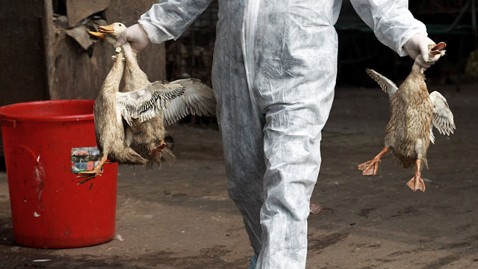Back to the future is a clich?, but how else can you describe CNN?s decision to revive Crossfire?
I?ve been trying to decide whether this is the worst idea ever, or merely meh. Since the program was canceled in January 2005, we?ve gotten Crossfired to the max ? but indirectly, with the different sides shouting across the political chasm from different networks. For what are Fox News and MSNBC if not the institutional equivalents of Pat Buchanan, Mary Matalin, John Sununu and Tucker Carlson on the right, and Michael Kinsley, Bill Press, Geraldine Ferraro and Paul Begala on the left?
You can?t blame CNN for wanting to get a piece of the ratings action, especially since it pioneered the art of the ideological shouting match. The zeitgeist has not only caught up to Crossfire but scaled new heights of insults and insularity. Still, in a way it would be constructive to have both sides on the same set. Viewers would hear opposing arguments colliding in real time ? an improvement on the polarizing effect of Fox and MSNBC, which serve mostly to reinforce what their audiences already believe.
Of course, it all depends on the quality of those arguments. CNN viewers who like news, information and civility could be turned off if the new Crossfire gets too obstreperous. In that respect, MSNBC and Fox News are not good role models.
It wasn?t always like this. Once upon a time, there was Point/Counterpoint on CBS?s 60 Minutes, a quaint three-minute segment during which columnists Jack Kilpatrick (?Now see here, Shana?) and Shana Alexander (?Oh, come on, Jack?) each spoke their piece. That devolved into Saturday Night Live?s parody version between Dan Ackroyd (?Jane, you ignorant slut?) and Jane Curtin (?Dan, you pompous ass?).
The reality has come weirdly close to the parody. Take, for instance, The Chris Matthews Show on Jan. 23, the day the Senate Foreign Relations Committee questioned then-secretary of State Hillary Clinton about the Benghazi tragedy. Matthews called Republicans on the committee ?clowns? and said Wisconsin Sen. Ron Johnson had given ?a pissant performance.? He went on, ?I don`t know how these guys get over the wall into American politics.?
?He proved that he?s very simple. He`s a simpleton,? Salon editor Joan Walsh said of Johnson, before moving on to call Kentucky Sen. Rand Paul ?delusional.? When Howard Fineman of The Huffington Post objected to calling senators ?clowns or pissants,? Matthews replied: ?Sometimes those words are appropriate.?
Now over to Fox News, home of former host E.D. Hill?s unforgettable (and completely off-base) reference to the Obamas? supposed ?terrorist fist jab? during the 2008 campaign. The network also became a ?birther? venue for Donald Trump, Sarah Palin and others who liked to fan the flames of suspicion and conspiracy about where Obama was born. Fox guests repeatedly claimed that Obama had not produced a birth certificate from Hawaii. Even though he had.
Glenn Beck?s greatest hit at Fox was probably when he said Obama had ?exposed himself as a guy -- over and over and over again -- who has a deep-seated hatred for white people, or the white culture.? Palin had her own highlights reel, including her description of Obama?s 2011 State of the Union speech as rife with ?WTF moments.?
CNN might want to consider a different direction. After all, Crossfire did get canceled at least in part because of a Jon Stewart broadside against its supercharged verbal warfare. As a guest on the show in October 2004, he challenged its whole premise. ?Why do you argue, the two of you? I hate to see it,? he told Begala and Carlson. He called the program damaging ?partisan hackery.? ?Stop hurting America!? he urged. By January the show was gone.
It would be fitting if CNN launched a high-minded reprise of Crossfire with an all-Comedy Central cast. Enlist Stewart as the liberal, facing off against Stephen Colbert in full character as a conservative foil. Well, that?s not quite fair to conservatives, since Colbert is a pretender. Perhaps Fox contributor Dennis Miller? But of course, he?s the guy who once calledBarney Frank ?Nancy Pelosi with a spittle problem?and displayed typical sensitivity regarding France?s decision to ban burqas, or ?pup tents,? in his phrase. His verdict:?I?m not sure you want to see some of these gals outside the burqa.?
So you see the problem. It?s complicated. Good night, CNN, and good luck.
?
?
Source: http://news.yahoo.com/cnns-crossfire-revival-might-worst-idea-ever-030003365--politics.html
pacific standard time northern mariana islands summer time coolio ricky rubio day light savings time peter paul and mary


